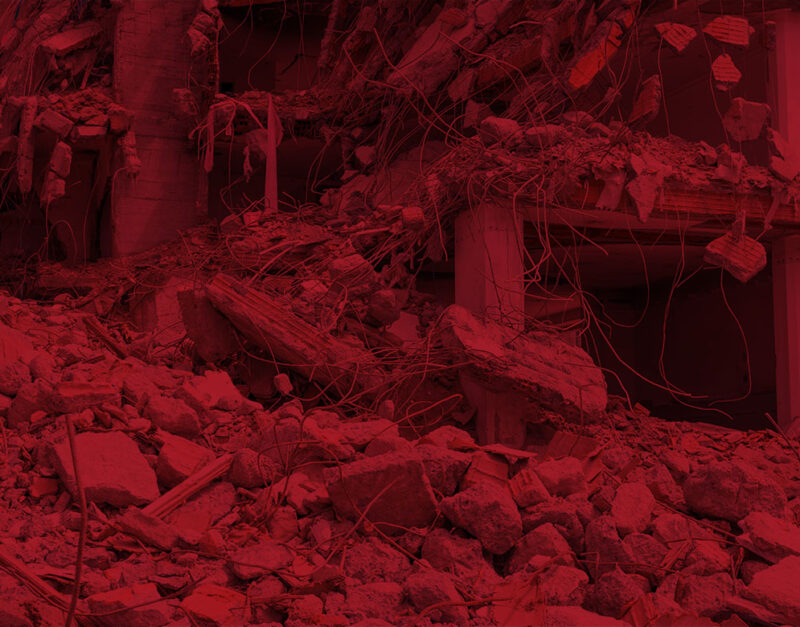 February 8, 2024
February 8, 2024 Devastating earthquakes that struck Turkey and Syria earlier this year have not only resulted in the significant loss of lives but also have unleashed another threat: exposure to asbestos and other toxic substances.
Turkey and Syria were struck by colossal earthquakes in February, resulting in the tragic loss of over 54,000 lives. While the immediate aftermath of such catastrophic events demanded an urgent focus on rescue and aid efforts, the long-term hazards emerging as a consequence of both the tragedy and the recovery are only now becoming apparent.
Asbestos, silica, mercury and lead are among the many toxins released from structures damaged by the earthquakes. Experts have warned that a secondary disaster of toxic contamination could be even more severe than the earthquakes themselves.
Dangers of Toxic Exposure
Mehmet Seyhmus Ensari, civil engineer and chairman of Turkey’s Association of Asbestos Dismantling Experts, told Reuters that an estimated 3 million people could get sick over the next several decades as a result of exposure to the toxins, which he categorized as an “optimistic estimate.”
Millions of people — particularly children — could face cancers, kidney disease and nervous system disorders.
“Respiratory diseases, eye diseases, asthma attacks, allergic reactions, and lung diseases will increase,” Ali Kanatli, head of the Turkish Doctors’ Association delegation in the quake-hit areas, told Reuters. “We will face these problems in the coming years.”
Damaged Structures Disturb Toxic Particles
The release of asbestos occurs when buildings and structures that contain asbestos-based materials — such as roofing, insulation, and pipes — are damaged or destroyed. The impact and subsequent collapse release asbestos fibers into the surrounding environment, making them airborne and easily inhaled by victims, rescuers and cleanup crews.
What is Asbestos?
- Asbestos is a naturally occurring mineral composed of durable, heat-resistant fibers. It has been widely used in the building, construction and manufacturing industries for its insulating, fireproofing, sound absorption, and strengthening capabilities. The automotive industry uses asbestos in vehicle brake shoes and clutch pads. Asbestos has also been used in ceiling and floor tiles, paints, coatings and adhesives and plastics.
- When products containing asbestos are disturbed, tiny asbestos fibers are released into the air. When asbestos dust is inhaled or ingested, the fibers can become trapped in the lungs. Over time these trapped fibers can accumulate, causing inflammation and scarring, which can impact breathing and lead to serious health problems.
- Asbestos has been classified as a known human carcinogen by several federal and international bodies, including the U.S. Department of Health and Human Services, the U.S. Environmental Protection Agency, the U.S. Occupational Safety and Health Administration (OSHA), and the International Agency for Research on Cancer (IARC).
- Asbestos has been linked to mesothelioma – a cancer of the thin membranes lining the chest and abdomen – and cancers of the lung, larynx and ovaries.
In the United States, mesothelioma is a relatively rare disease with about 3,000 new cases diagnosed each year, according to the American Cancer Society. Asbestos exposure is the primary risk factor for contracting the disease, and diagnosis usually occurs decades after initial exposure. While the disease was first limited to individuals exposed to asbestos in the workplace, diagnoses have grown as more people are exposed to asbestos through other means.
Symptoms associated with asbestos-related exposure include shortness of breath, wheezing, chronic cough, chest pain, swelling in the face, and difficulty swallowing.
How We Help Victims of Asbestos Exposure
Seek justice with the help of our experienced asbestos attorneys. Our asbestos law firm has represented individuals like you affected by asbestos exposure for over 20 years, aggressively fighting the corporate giants responsible for their dangerous products. If you or a loved one were exposed to asbestos or suffered from a disease caused by asbestos, like mesothelioma, we can help.


